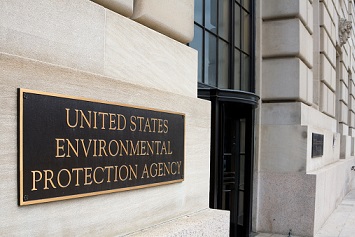The EPA possesses substantial flexibility in how it considers the costs and benefits of regulations it promulgates. That flexibility is inherent in the environmental statutes, which sometimes require that costs be considered in rulemaking and sometimes make no mention of costs/benefits, but, in any case, rarely specify how such consideration should occur. This has given rise to widely diverse approaches by the Agency in how it considers costs/benefits and a lack of transparency in how such considerations take place.
The Agency has now published an advanced notice of proposed rulemaking (ANPR) in which it discusses the possible need to develop a “consistent and transparent interpretation relating to the consideration of weighing costs and benefits in making regulatory decisions” and solicits public comment on which factors should be brought to bear in such an interpretation.
The ANPR was motivated at least in part by responses to an EPA request for comment on regulations that may be appropriate for repeal, replacement, or modification (April 13, 2017, Federal Register (FR)). The Agency notes that one common theme in many industry comments related to how the EPA considers cost in developing its regulations.
Different Statutory Language
The ANPR notes that there can be a significant variation in terminology and specificity provided in each law regarding the nature and scope of cost and benefit considerations. For example, Section 301 of the Clean Water Act (CWA) instructs the administrator to select the best available technology economically achievable and then requires the EPA to take into account the cost of achieving effluent reductions when assessing best available technology. Section 111 of the Clean Air Act (CAA), however, requires the administrator to set standards of performance for reducing air pollution, defined as “the best system of emission reduction which (taking into account the cost of achieving such reduction and any non-air quality health and environmental impact and energy requirements) the Administrator determines has been adequately demonstrated.” Other provisions may only implicitly direct the EPA to consider costs, alone or in conjunction with benefits and other factors, or remain silent on whether costs should or may be considered.
“Virtually all environmental statutes leave the specifics on how costs and benefits are to be considered to EPA,” states the EPA. “The Agency interprets the terms used in the relevant statute and decides how best to weigh costs against benefits and other factors in making regulatory decisions.”
Concepts of Cost
All this has resulted in a variety of concepts of costs that may be considered across statutes and even under the same statute, says the Agency. These concepts include many different metrics that estimate financial impacts to the regulated entity, e.g., direct costs for compliance activities incurred by a regulated entity, compliance cost per ton of pollutant reduced, the number of regulated facilities that may go out of business as a result of the proposed regulation, or compliance cost as a percent of firm revenues.
Data Availability
Another complicating factor is the amount of data available to the Agency when it considers costs and benefits.
“Any assessment of costs (and benefits) is limited by the state of scientific and economic modeling, quantification methods, and available data—all of which change over time and across industries and sectors of the economy,” states the EPA. “Similarly, statutory authority to collect information from regulated industries varies, and in some cases EPA may choose not to exercise that authority to reduce the costs of data collection to the regulated entity (relying instead on voluntary provision of information or publicly-available data, or simply doing without data where the burden appears to outweigh the data’s anticipated utility).”
Feedback Requested
The EPA is seeking feedback on three topics:
- The nature of potential concerns regarding perceived inconsistency and lack of transparency.
- Potential approaches for increasing consistency and transparency in considering costs and benefits in the rulemaking process. One possible approach here is a process for retrospective reviews after rules have been implemented to help gain insights about the realized costs and benefits of actions that may help inform how costs and other factors should be considered in future rulemakings.
- Potential for issuing regulations to govern EPA’s approach in future rulemakings. The Agency makes it clear that rulemaking can be a significant challenge. For example, the Agency asks, “How can EPA best promote more consistency and predictability while still leaving room for consideration of regulatory context and for flexibility to adapt to new information and methodological advances?” Also, the EPA is concerned that in cases where current EPA practice reflects prior judicial decisions, a change in course may come with significant burden to the Agency.
The ANPR was published in the June 13, 2018, FR.

